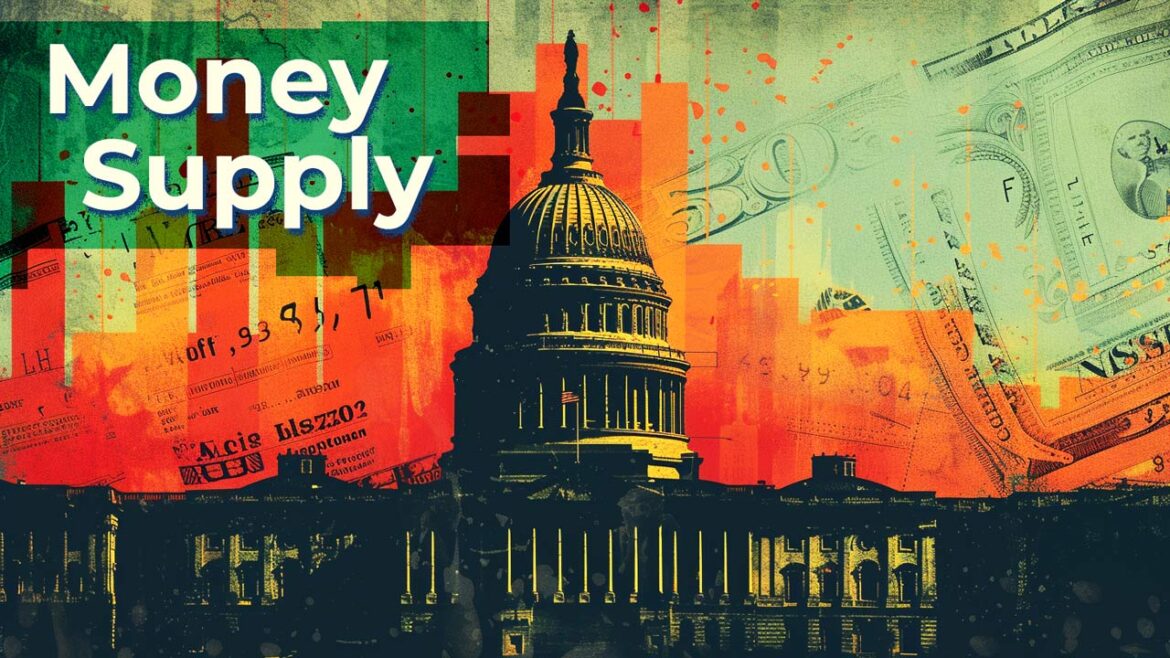Precious metals are apparently waking up. And here is where you can find the best deals.
Site:
Precious metals news
Discover the latest trends in residential and commercial real estate that could reshape the entire banking sector!
Gold's remarkable rise this year had analysts scratching their heads until a new force was identified: Chinese retail investors swarming the Shanghai Futures Exchange (SHFE). Despite headwinds like increasing Treasury yields and a robust dollar, trading volumes on the SHFE tripled, propelling gold prices upward. China's long-standing connection to gold, coupled with recent market uncertainty, has contributed to this surge, indicating a major shift in gold trading patterns. However, as gold prices fluctuate, questions persist about the SHFE's broader impact on the global gold market.
Zimbabwe's new gold-backed currency, the ZiG, experienced its first decline since its introduction this April, slipping nearly 1% to trade at 13.38 against the dollar on Thursday. This weakening aligns with recent drops in gold prices, which have seen a downturn over the past three days. The ZiG, an acronym for Zimbabwe Gold, is supported by a mix of precious metals, including approximately 2.5 tons of gold, and $100 million in foreign currency reserves maintained by the central bank. The currency debuted at 13.56 per dollar, replacing the significantly devalued Zimbabwean dollar, which had plummeted about 80% against the US dollar since the beginning of the year. During a business conference in Bulawayo, Zimbabwe’s Vice President Constantino Chiwenga emphasized the ZiG's role in transitioning away from the US dollar, which is used in roughly 80% of transactions. The government plans to phase out the US dollar as legal tender by 2030.
In a month marked by remarkable surges in both Bitcoin and gold prices, speculation is growing about the sustainability of high interest rates in heavily indebted Western economies. These assets, usually favored by distinctly different investor groups, have seen simultaneous rallies, driven by soaring inflation and market volatility. Kathleen Brooks, Research Director at XTB, points out the significance of these parallel trends: "When gold and Bitcoin rise together, it prompts a deeper analysis of investor behavior. Both are capitalizing on the current market sentiment, as evidenced by record highs in major U.S., Japanese, and European stock indices." This alignment raises questions about the broader economic implications, including the feasibility of returning to a gold standard in a world moving away from dollar dominance.
The U.S. economy started the year on a weaker note than anticipated, with the GDP growth rate decelerating to 1.6% in the first quarter, as reported by the Commerce Department. This figure significantly undershot the 2.4% growth economists had projected based on surveys by Dow Jones. The Gross Domestic Product (GDP), which gauges the total output of goods and services, showed a marked slowdown from the 3.4% increase in the final quarter of 2023 and the 4.9% rise in the quarter before that. While consumer spending did grow by 2.5%, it was less robust compared to the 3.3% increase in the previous quarter and also fell short of the 3% expected by Wall Street analysts.
 In Response to a Steady Fed, Southeast Asia Adjusts Rates to Safeguard Currencies
In Response to a Steady Fed, Southeast Asia Adjusts Rates to Safeguard CurrenciesApr 25, 2024 - 09:07:43 EDT
As 2024 unfolds, the anticipation that the U.S. Federal Reserve might reduce interest rates has waned. Initially, the consensus was that a rate cut was imminent; however, four months into the year, the Fed's updated stance suggests no rush to lower rates, supported by a stronger-than-expected U.S. economy and persistent inflation. This cautious approach by the Fed is not just a concern for analysts and investors. Central bankers globally, particularly in Southeast Asia, are scrutinizing the Fed's moves closely. Their decisions on whether to adjust interest rates hinge significantly on the Fed's actions to avoid adverse impacts on their own currencies.
Gold prices experienced a notable increase on Thursday, primarily driven by a declining U.S. dollar. Investors are now closely monitoring upcoming U.S. economic data, which could provide significant insights into the Federal Reserve's future interest rate decisions. As of midday in London, spot gold climbed 0.6% to reach $2,328.61 per ounce. Meanwhile, U.S. gold futures saw a modest rise of 0.1%, settling at $2,341.00 per ounce.
Mike Maloney has recently made two investments - one of them using a very novel method.
The solution to a problem shouldn’t make the problem worse.But apparently, California’s policy makers missed that memo.On April 1st, the state instituted a $20 minimum wage for fast food workers, the highest in the US. With California’s absurdly high cost of living, the policy appeared to make life more manageable for low-income residents. Unfortunately, as the adage goes, “If it sounds too good to be true, it probably is.” California’s new minimum wage is poised to hurt the same fast-food workers it aims to help.
In response to escalating Middle East tensions, Turkish investors like Faruk Mutlu are increasingly turning to gold as a safe investment. At a bustling jewelry store in Istanbul, Mutlu exchanged his savings for gold, citing its enduring value. The recent geopolitical instability, particularly the conflict between Israel and Iran, has fueled speculation about rising gold prices, spurring a rush to buy. This surge in demand is evident in Istanbul’s Kuyumcukent, the heart of Türkiye’s jewelry industry, where long lines at gold shops have become a common sight. Riza Gokay Tugsavrol, owner of Harem Gold, notes that in times of uncertainty, gold’s reputation as a secure asset makes it even more appealing to investors.
Vice President Constantino Chiwenga stated that Zimbabwe’s new currency, the ZiG, marks a significant move toward phasing out the US dollar in the national economy. Introduced on April 5 as a replacement for the unstable Zimbabwean dollar, the ZiG aims to restore monetary sovereignty in a country where over 80% of transactions are currently conducted in US dollars. Chiwenga emphasized the permanence of the ZiG, highlighting its role in Zimbabwe’s de-dollarization strategy, which focuses on fiscal discipline, monetary prudence, and economic revitalization.
As Wall Street anticipates key economic data, both stocks and bonds saw declines, affecting market sentiments about the Federal Reserve's forthcoming actions. After a notable two-month high, equities found it challenging to advance, with investors eyeing results from Meta Platforms Inc. In contrast, Tesla Inc. saw an 11% rise after Elon Musk announced plans for more affordable vehicles. Meanwhile, Nvidia Corp.'s rally paused, and Treasury yields climbed as a substantial note sale did little to alleviate concerns about the market's direction following this year's downturn.
Gold prices remained stable on Wednesday, recovering from recent lows as tensions in the Middle East subsided. Investors are now focusing on upcoming U.S. economic data, expected later this week, which may influence the Federal Reserve's interest rate decisions. Spot gold hovered at $2,322.09 per ounce as of 1:45 p.m. ET, with U.S. gold futures slightly down by 0.2% at $2,338.4. This follows a significant drop from the record high of $2,431.29 on April 12.
 U.S. Strategizes Financial Blockade on Chinese Banks Over Russia Support
U.S. Strategizes Financial Blockade on Chinese Banks Over Russia SupportApr 24, 2024 - 15:15:11 EDT
The U.S. is preparing sanctions that could disconnect certain Chinese banks from the global financial system. This move aims to equip Washington's top diplomat with the leverage needed to curb Beijing's financial support for Russia's military efforts. As Secretary of State Antony Blinken visits Beijing this Tuesday, there are growing questions about whether the U.S.'s formidable financial tools can effectively disrupt the deepening trade ties between Beijing and Moscow, which have been crucial in supporting Russia's military resilience in Ukraine.
The yen has consistently weakened to a 34-year low against the dollar, sparking concerns about its impact on Japan's economy and stock market. While the depreciating yen has initially boosted Japan's stock market—especially benefiting major manufacturers whose overseas earnings increase in yen terms—the ongoing weakness is raising alarms. The Topix Index, heavily influenced by transport equipment and electrical machinery companies, showcases this growth, but the question remains: How low can the yen go before it does more harm than good?
Oil prices advanced, with West Texas Intermediate (WTI) closing near $83 a barrel, buoyed by the prospect of looser monetary policies which helped counterbalance diminishing geopolitical risk premiums. The oil market's gain was mirrored by a rally in equities, sparked by a report indicating this year's slowest growth in U.S. business activity—a development viewed by traders as a potential precursor to Federal Reserve interest rate cuts.
Gold prices remained stable on Wednesday, as diminished risk premiums related to Middle East tensions were counterbalanced by the market's anticipation of upcoming U.S. economic data. This data is expected to provide key insights into the Federal Reserve’s future interest rate decisions. Spot gold closed flat at $2,322.09 per ounce by mid-afternoon, maintaining its position after dropping to its lowest level since April 5 in the previous session. Meanwhile, U.S. gold futures saw a slight decline, settling 0.2% lower at $2,338.40.
Money Supply is a very important indicator. It helps show how tight or loose current monetary conditions are regardless of what the Fed is doing with interest rates. Even if the Fed is tight, if Money Supply is increasing, it has an inflationary effect.
The monetary battle of the 20th century was gold vs. fiat. But the monetary battle of the 21st century will be gold vs. bitcoin. With Wall Street jumping into the game with bitcoin ETFs, a bitcoin halving recently splitting the block reward for miners in half, and both gold and bitcoin hovering near their all-time highs, it’s a great time for a sober look at which asset would come out on top in a genuine, full-blown hyperinflationary financial collapse.
 Crude Retreats Below $83; U.S. Senate Targets Iranian Oil with New Sanctions
Crude Retreats Below $83; U.S. Senate Targets Iranian Oil with New SanctionsApr 24, 2024 - 09:16:40 EDT
U.S. crude oil prices dropped back below $83 per barrel, reversing gains from a previous 2% rally as the market anticipates upcoming U.S. petroleum inventory data. The focus in the oil market has shifted back to supply and demand fundamentals, as geopolitical tensions between Israel and Iran, which previously influenced the market, have eased. Additionally, the U.S. Senate has approved a foreign aid package that includes expanded sanctions against Iranian oil, targeting entities involved in its transportation and processing.









